The importance of complementary nutrition in the fight against the sugarcane borer
It is estimated that up to 5 billion reais are lost annually due to this pest in Brazil
Over time, the machine test drives carried out for Cultivar Máquinas magazine took the direction of contextualization. More than testing a machine, specifically reporting its characteristics and performance in the field, our tests began to report producers' experiences, in specific crops, using different commercial models of machines. Therefore, after several tests with LS tractors, inserted in specific realities, such as horticulture, fruit growing, vines and dairy production, for this December edition we bring to the reader of Cultivar Máquinas magazine a very interesting and characteristic situation, which is fruit production. table, specifically cashew, dragon fruit and lychee, in which the customer uses the LS model R65 tractor.
To learn more about the insertion of the R65 model in these crops, we went to visit the largest cashew producer in the state of São Paulo, Mr. Donizete Aparecido Leme, owner of Sítio Cajueiro and producer of the Caju Nogueirense brand, in the São Bento neighborhood, a rural area in the municipality of Artur Nogueira, São Paulo.
The cashew tree is a medium-sized tree, large for a fruit tree, and which imposes certain restrictions on the movement of machines, mainly in mowing and transport activities. The fruit of the cashew tree (Anacardium occidentale) is the nut, and the cashew, considered a table fruit, is actually a pseudofruit, that is, a juicy mass that forms between the floral peduncle and the nut. Very tasty and visually very attractive, this product has gained great commercial value over the years, especially in the center of the country. However, due to the climatic conditions in the state of São Paulo not being as suitable for chestnut production as in the Northeast region of Country, this is now considered as a by-product of cashew.
The CCP76 variety, installed at Sítio Cajueiro, was developed by Embrapa and is called Caju Vermelho, suitable for consumption as table fruit. It is a variety of dwarf cashew, so named because it tends to extend its branches, from the trunk, to the sides, which curve and even touch the ground, tending to open the crown. On the site, Mr. Donizete, with the experience of his years of work, usually carries out training and training pruning in the shape of a cup, favoring the illumination of the center of the plant by the sun's rays and manual harvesting. This cup-shaped approach was accentuated by the producer in the last two years, when he found that in addition to the previously mentioned advantages, anthracnose control was quite effective. As anthracnose is a moisture-related disease, the aeration caused by pruning reduced the incidence and consequently the need to apply phytosanitary products. According to the producer, with this measure alone, production went from 12 thousand to 22 thousand boxes per year, which brought income and enthusiasm to continue investing time and carrying out the necessary practices.
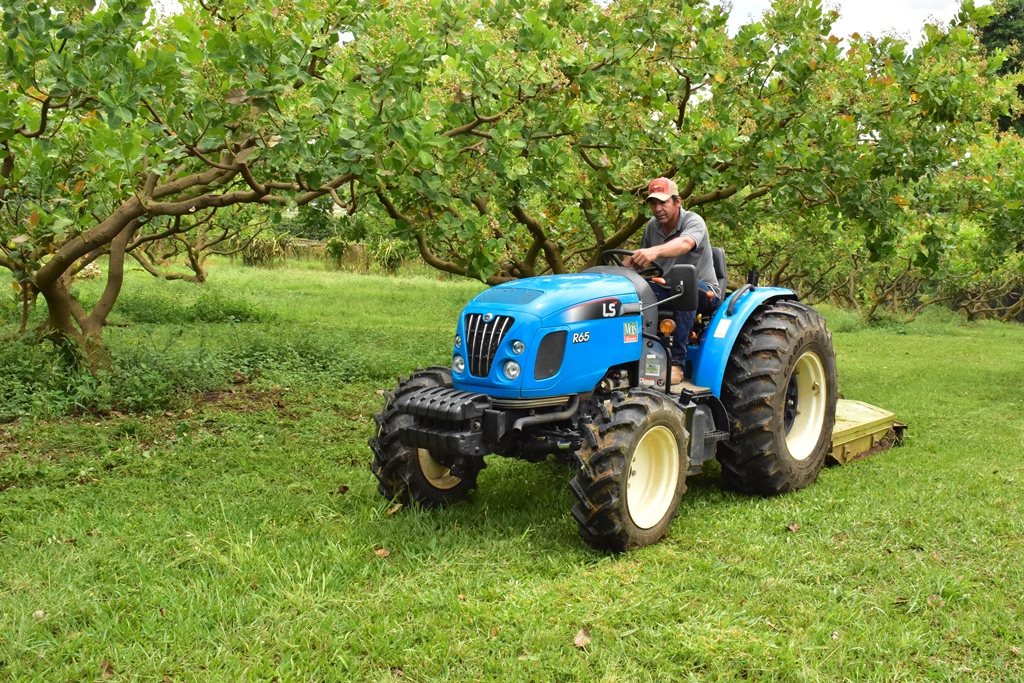
Currently, the orchard is 19 years old, as of implementation, and is in full production, showing no sign of declining productivity.
During the production cycle, it is necessary to carry out several mowings to clean the area and, for this, the LS R65 tractor is used with a Kamaq mowing machine, model 172, coupled to the three points of the hydraulic system. Several applications of insecticides and fungicides are also required in which the LS tractor coupled to a turbo atomizer is used.
Furthermore, another use of the LS model R65 tractor is to transport the product from the orchard to the pavilion where the classification, processing and packaging of the fruits in packaging takes place, as well as storage in the cold room. Between six and ten fruits are placed in each box, depending on their size. This production period, which runs from November to May, consumes many machine hours and a lot of travel.
The intensity of use of labor is variable, since the harvest is done selectively, only taking the fruits at the optimum harvest point. This is work carried out over months, every day, some with more intensity than others. The workforce is all family and normally requires five people, with no start or finish schedule, with frequent night work. The couple and their children are joined by other close family members and some friends, during peak work periods. There are days when few fruits are harvested, while other days there is a coincidence of ripeness and working hours are extended. Since the cashew tree is a large tree, the harvest is done manually as far as possible and with the help of a collector, which is nothing more than a fabric bag, attached to the end of a long cable.
Average production is approximately 150 boxes per foot. Although there are failures, due to the loss of plants during the installation period, currently around 200 plants can be accounted for in full production.
All production is cleaned, classified, packaged and placed in a cold room. Afterwards, it goes to Ceasa in São Paulo and to the São Paulo Public Market, Mercado Municipal Paulistano, in outsourced transport. A small part of the production is sold directly to consumers and small traders, who go to the site to buy. Discarded fruit that is not considered table fruit is sold by weight to direct customers, for the production of pulp and juice.
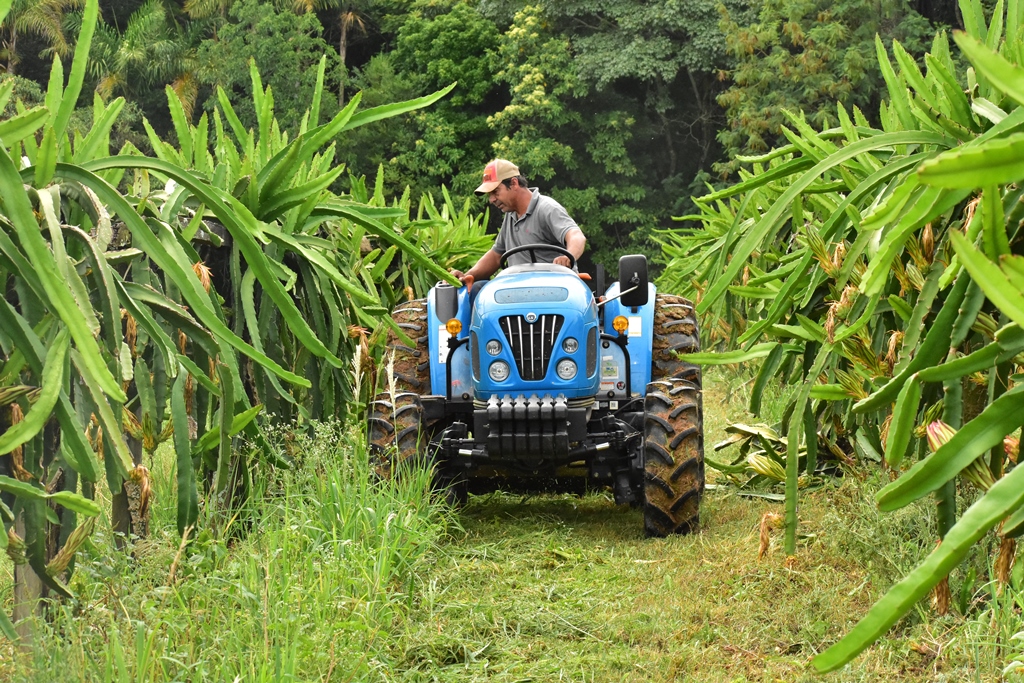
Another fruit produced at Sítio Cajueiro is pitaya or dragon fruit. It is an exotic species, from Central America, which is on the rise in Brazil. Different varieties are produced at Sítio Cajueiro, with approximately 350 trees of white dragon fruit and a thousand trees of purple dragon fruit, divided into two areas.
Production is carried out in support structures, known as pitaya vines, made up of wooden poles and lines, where the plant is supported. The fruit is produced for consumption at the same time as the cashew tree, from November to May, with a completely manual and careful harvest. The production cycle is very fast, going from the flower bud, on the thorn, to the fruit in approximately 60 days.
It is a table fruit aimed at people looking for healthy products. Since it is rich in vitamins, such as C and B complex, especially B3, as well as minerals, such as iron, calcium and phosphorus, at the same time as it has a low caloric value, its consumption is related to dietary processes.
In terms of management, there is a need for care, especially with fungi and insects, which leads to the need to apply fungicides and insecticides during the first phase of the production cycle. To do this, the turbo atomizer attached to the LS R65 tractor is used, which applies it in one line, reaching both sides of the vine.
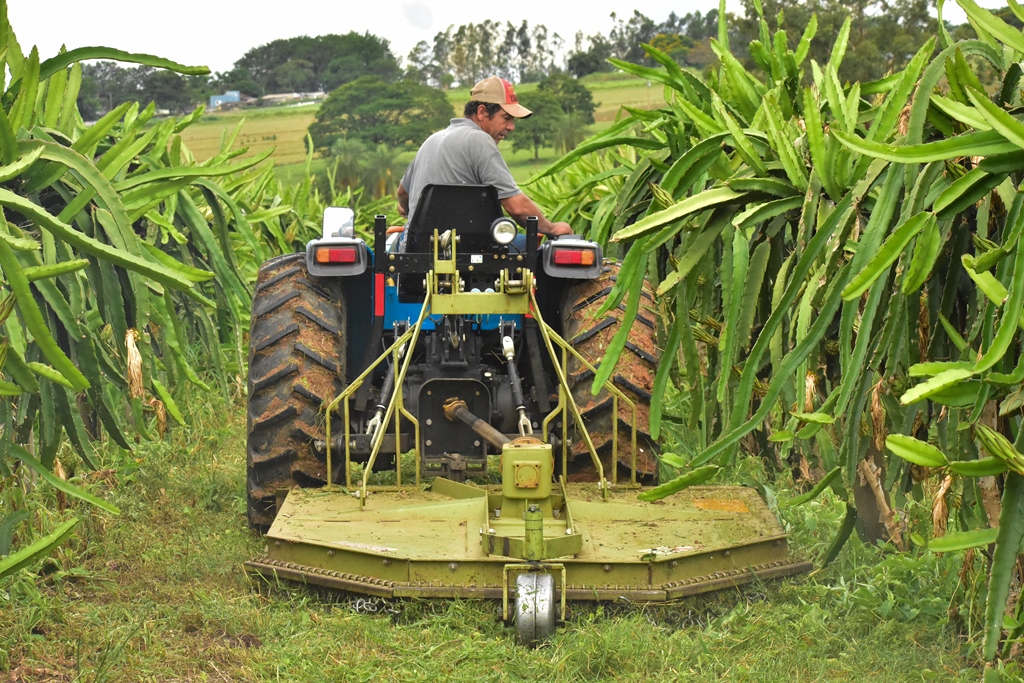
In the dragon fruit orchard, installed at Sítio Cajueiro for years, production is stable and would last many years at full production if it weren't for the need to maintain the structure, which, being made of wood, deteriorates over time. Currently, there are 1.350 trees that provide a production of approximately five boxes per tree during the months of November to May.
In dragon fruit cultivation, the LS R65 tractor, in addition to spraying, is used to mow between vine rows and transport the product from the production area to the pavilion, with the help of the agricultural trailer.
The third fruit crop at Sítio Cajueiro is lychee, which is a fruit that comes in bunches and matures close to the end of year festival season, which is why it is a product with high commercial value at this time of year. Consequently, after the turn of the year the price drops and only rises again when the product becomes scarce on the market.
Harvesting is completely manual, breaking the entire bunch, including the use of ladders to help harvest the high branches. The harvest point appears when the color changes from yellow to red and the pulp/skin ratio changes, increasing the pulp and decreasing the thickness of the skin. In general, the harvest peak occurs in just two weeks in December, although this was delayed due to the occurrence of frost in the region.
At Sítio Cajueiro there are approximately 220 trees, with production of approximately 100kg per tree. Sales are by weight, in 10kg bags, and are made to customers who travel to the site.
One of the biggest problems with this crop is the false rust mite, which can be combatted by applying sulfur using a tractor sprayer. Another problem is thrips, which can be combated with insecticide applications.
The R65 platform model that we found at Sítio Cajueiro was purchased at the branch store in Mogi Mirim of JA Máquinas, LS Tractor dealership. Headquartered in Jaú, SP, the dealership is one of the most active in marketing the brand. The region in which the Mogi Mirim branch operates encompasses 72 municipalities, with clients related to fruit growing and grain production (corn and soybeans, mainly), in addition to other important activities such as livestock (beef and dairy) and horticulture in metropolitan regions. The main LS models that are sold in the region are small and medium-sized tractors.
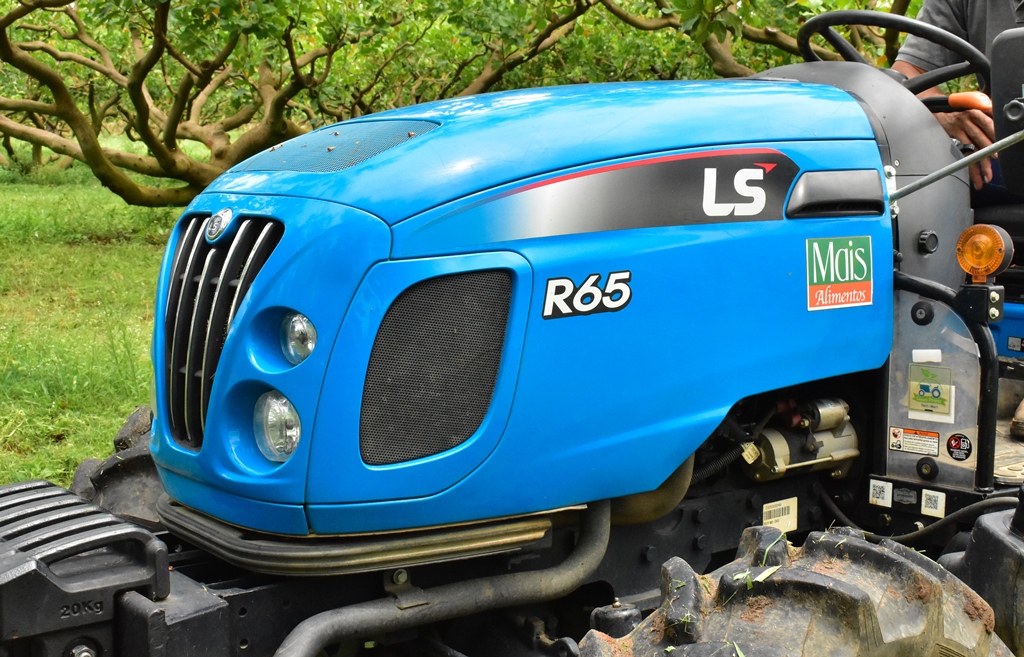
The engine that equips this model is from the LS brand, model L4AL T1- Tier 3. The engine has four cylinders, with 2.621cm3 and 16 valves, with turbocharger, which produces a maximum power of 65hp at 2.500rpm (ISO TR 14396 standard) and maximum torque of 203Nm at 1.600rpm.
The Synchro Shuttle synchronized transmission offers 32 forward gears and 16 reverse gears, with a creeper. The power take-off (TDP) is independent with electro-hydraulic drive and three speeds, 540, 750 and 1.000 rpm. The front axle is mechanically driven.
The hydraulic system has a total flow rate of 46,8 liters/minute and the category II three-point hitch system reaches a maximum pressure of 167kgf/cm2 and lifting capacity of up to 2.100kgf at the ball joint. The remote control is independent with two valves in the standard version and three valves as an option, with a maximum flow rate of 31,2 liters/minute. The tested tractor was equipped with 250/80-18 tires on the front and 14.9-24 tires on the rear wheels.
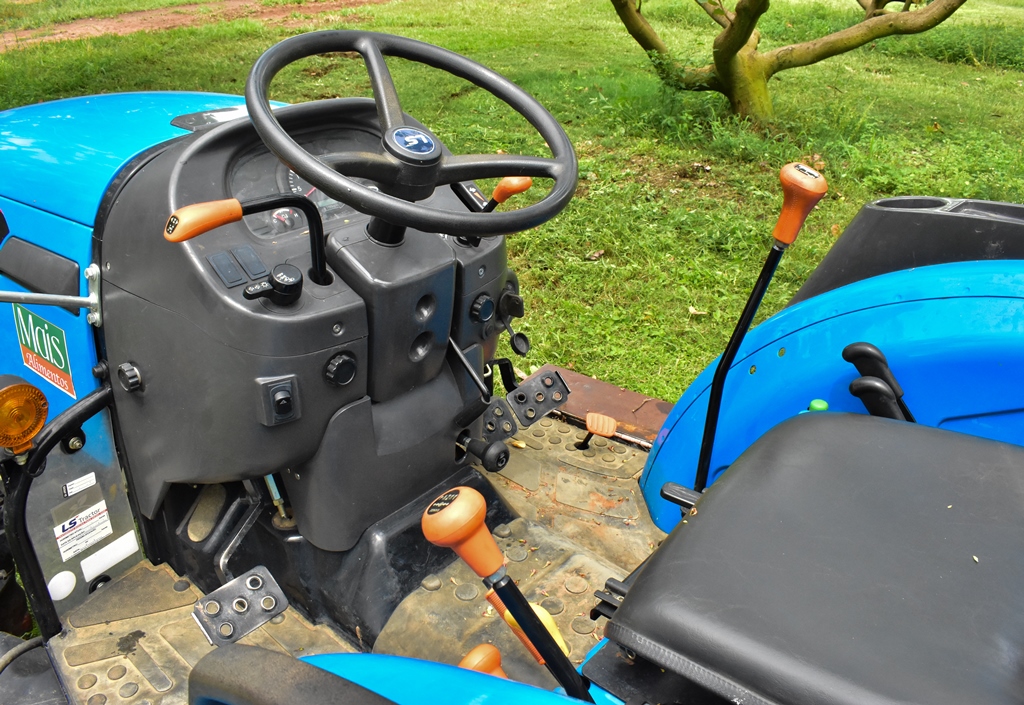
The store manager, Ademir Chiquetti Júnior, Sidinei Lorencetti, store sales consultant, and Rodrigo Barbará Silva, commercial coordinator of LS Tractor for the state of São Paulo, were with us during this work.
Mr. Donizete Aparecido Leme is a resident of Sítio Cajueiro, located in the municipality of Artur Nogueira, São Paulo, which in addition to cashew, dragon fruit and lychee, has areas where prickly pear and blackberries are cultivated as commercial plants.
Born in Paraná and from São Paulo by adoption, he told us a little about his life story, upon his arrival in São Paulo and more specifically in the region, where he ended up settling. After a short period of searching for a job opportunity in Mato Grasso, at the end of the 1980s, and as he said, “amazed” by the state where he was born by the frost of 1993 that almost decimated the coffee trees in Paraná, followed by the boll weevil outbreak that attacked the cotton crop in mid-1995.
Without much alternative, he arrived in search of work and opportunity. In 2002, he began implementing the cashew seedlings that he exploits today and is proud to be one of the pioneers and an example of production for other producers. Without any concern, he talked about his experiences, achievements and failures with the crop, today being a reference for other producers, interacting with researchers from Embrapa and producers from other states, mainly Ceará.
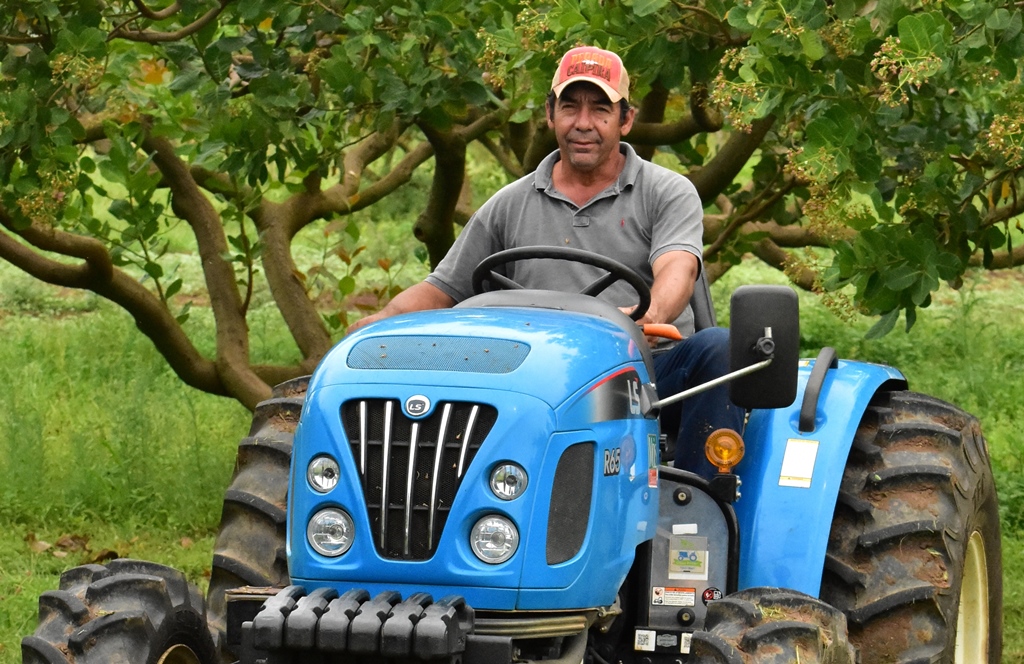
Mr. Donizete's first contact with the LS brand, and particularly with the R65 model, was in a presentation given by the regional dealer JA Máquinas, in Mogi Mirim, SP. He was a customer of another brand and as soon as he purchased the LS and started using it, he recognized some positive characteristics. He considers the R65 LS model a complete tractor, due to the options it offers and the items it already includes in the basic version. In comparison with his old tractor, he highlights the issue of comfort, which even makes his children want to work with this tractor.
Currently with 400 hours of use, the main operations in which the LS R65 is involved are mowing and transport, where it proves to be very economical. In fact, Mr. Donizete carried out consumption measurements, finding general values of around three to 3,5 liters of fuel per hour. Now, the next step is to use it with the sprayer.
In general terms, he declares himself very satisfied, mainly due to the involvement and motivation for the work on the part of his children, who compare the R65's reversing system and gearbox with that of a car. He told us that he puts the most common gears, which are 3rd and 4th, and that his children like to change gears, going from first gear to working gear.
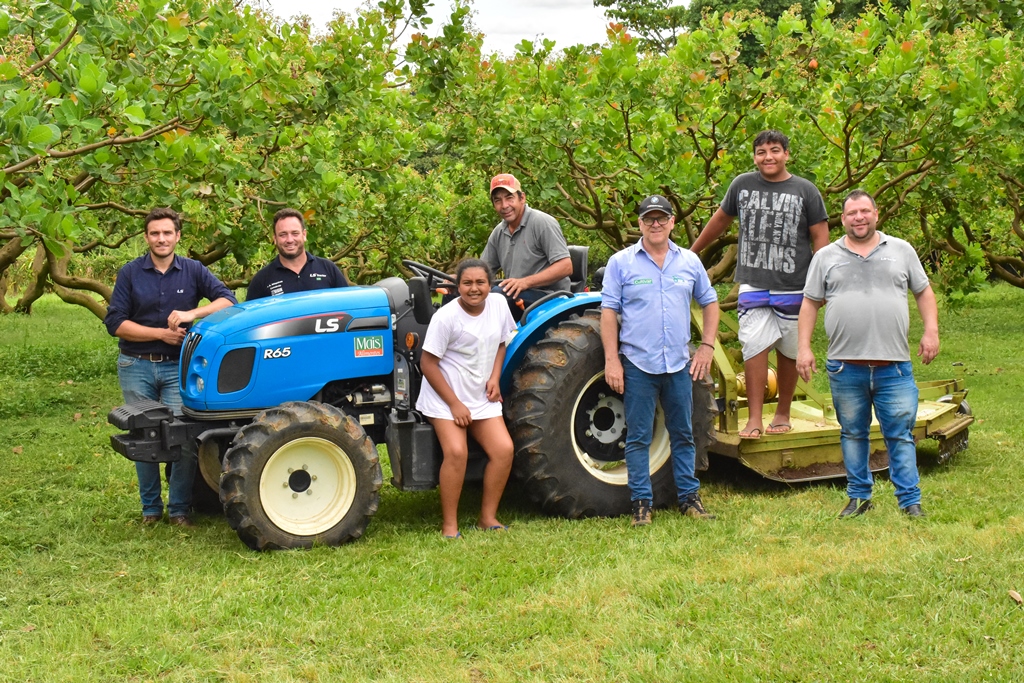
Also, regarding maintenance, he said he was very satisfied, as until now only the engine's lubricating oil change and daily fuel supply had been necessary.
He showed enthusiasm for the adaptation he made to the tractor, removing the ladder on the left side and replacing it with a toolbox, which he uses to take the work tools used in the cashew orchards to the field.
Spending the day and listening to Mr. Donizete was a pleasure. In addition to having great knowledge about the crops he grows and the tractor he operates, he shares his experiences selflessly and with joy.

Receive the latest agriculture news by email
It is estimated that up to 5 billion reais are lost annually due to this pest in Brazil
Fertigation is one of the most advanced and efficient methods of applying fertilizers that guarantees nutrition directly to the root zone of the crop throughout the growing season.